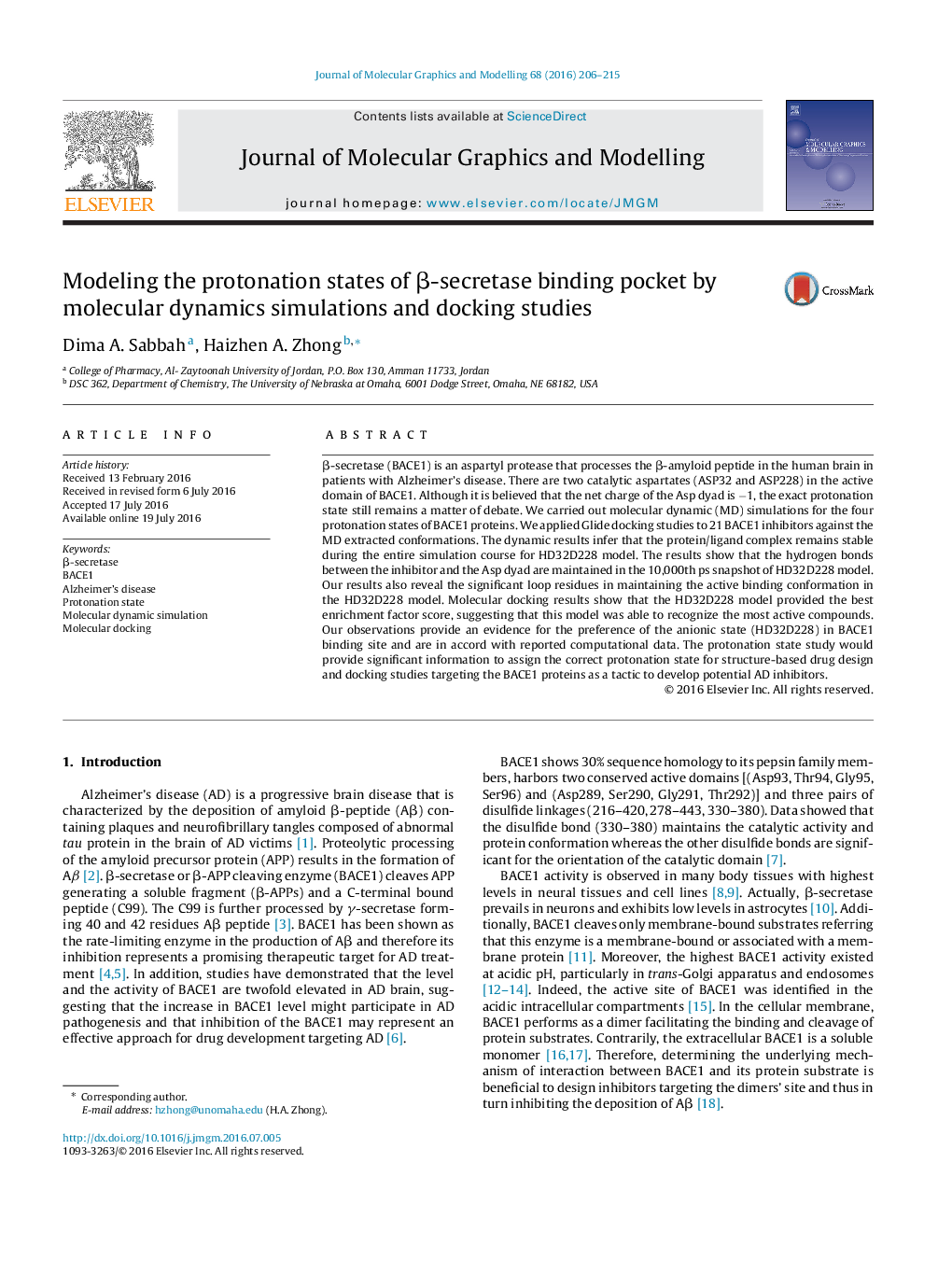| کد مقاله | کد نشریه | سال انتشار | مقاله انگلیسی | نسخه تمام متن |
|---|---|---|---|---|
| 443233 | 692690 | 2016 | 10 صفحه PDF | دانلود رایگان |
• 10-ns MD simulations were applied to model four protontation states of ASP32 and ASP228 of β-secretase.
• The results show that the stable hydrogen bond network and structural stability in the HD32D228 model.
• Docking studies show that the HD32D228 model gave the best enrich factor score.
β-secretase (BACE1) is an aspartyl protease that processes the β-amyloid peptide in the human brain in patients with Alzheimer’s disease. There are two catalytic aspartates (ASP32 and ASP228) in the active domain of BACE1. Although it is believed that the net charge of the Asp dyad is −1, the exact protonation state still remains a matter of debate. We carried out molecular dynamic (MD) simulations for the four protonation states of BACE1 proteins. We applied Glide docking studies to 21 BACE1 inhibitors against the MD extracted conformations. The dynamic results infer that the protein/ligand complex remains stable during the entire simulation course for HD32D228 model. The results show that the hydrogen bonds between the inhibitor and the Asp dyad are maintained in the 10,000th ps snapshot of HD32D228 model. Our results also reveal the significant loop residues in maintaining the active binding conformation in the HD32D228 model. Molecular docking results show that the HD32D228 model provided the best enrichment factor score, suggesting that this model was able to recognize the most active compounds. Our observations provide an evidence for the preference of the anionic state (HD32D228) in BACE1 binding site and are in accord with reported computational data. The protonation state study would provide significant information to assign the correct protonation state for structure-based drug design and docking studies targeting the BACE1 proteins as a tactic to develop potential AD inhibitors.
Figure optionsDownload high-quality image (106 K)Download as PowerPoint slide
Journal: Journal of Molecular Graphics and Modelling - Volume 68, July 2016, Pages 206–215
